
| Publisher: | Berkley | |
| Genre: | Women, Family Life, General, Romance, Fiction | |
| ISBN: | 9780451489425 | |
| Pub Date: | August 2019 | |
| Price: | $16 |
| Fiction |
by Kristan Higgins
Kristan Higgins (If You Only Knew; On Second Thought) has created an engaging world in Life and Other Inconveniences. Emma London was raised by her patrician grandmother, the internationally famous designer Genevieve London. Emma's future seemed assured: an Ivy League education, followed by a position within Genevieve's company. But then, just after high school graduation, Emma got pregnant and Genevieve kicked her out.
For the last 17 years, Emma has scraped by, putting herself through school, becoming a therapist and raising her daughter, Riley. Suddenly, however, her simple life is upended when Genevieve calls Emma to tell her that she has a brain tumor.
Emma, still hurt, at first refuses to go to Connecticut, but Riley is facing a tough situation at school, and Emma decides a change of scenery would be good for them. So they return to the mansion where she grew up, and there all three women discover things they never knew about each other.
Touching, a little romantic and sometimes laugh-out-loud funny, Life and Other Inconveniences is a wonderful novel about the nature of grief and affection in a complicated family. Genevieve is mourning many things, which Emma never realized. Meanwhile, Emma comes to discover that Genevieve's influence wasn't always terrible and that having a great-grandmother is good for Riley. With alternating perspectives from across generations, Kristan Higgins portrays the bewilderment of those bereft by the loss of a loved one. Thoughtful, sweet and with a gentle undercurrent of humor, this is summer reading at its finest. --Jessica Howard, bookseller at Bookmans, Tucson, Ariz.
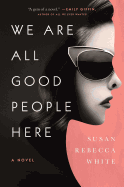
| Publisher: | Atria | |
| Genre: | Friendship, Literary, Political, Fiction | |
| ISBN: | 9781451608915 | |
| Pub Date: | August 2019 | |
| Price: | $27 |
| Fiction |
by Susan Rebecca White
When Daniella and Eve become college roommates in Roanoke, Va., in 1962, their futures are unimaginable--two naïve, proper young ladies, molded by their culture yet carried along in the upheaval of the tumultuous '60s and '70s. In her fourth novel, Susan Rebecca White (A Place at the Table) reflects the angst of the times through characters acting with the conviction that "we are all good people here" as their friendship carries through 1992: "Part Two--Their Daughters."
The first year at Belmont College is marred by Daniella's not receiving a sorority bid, because she is half Jewish. In spite of her sterling silver tea set announcing her traditional roots, Eve is passionately righteous and leads a disastrously failed campaign for rights for the dorms' black maids. The shock of these twin injustices propels both girls from the bucolic campus to New York and Barnard, for visits to the Village, debates on communism and the Congress of Racial Equality, and relationships with two men who will influence their paths.
White's period details resurrect the emotions of the era. Daniella joins the Mississippi Freedom Riders and Eve joins a radical collective; Daniella becomes a lawyer and Eve goes underground. Years later their paths cross again, as Daniella rescues Eve from the dangers of life as a dropout. Soon, they are both mothers, and although they've changed, their friendship segues into one for their daughters. The challenges of the '80s in some ways mimic what the mothers experienced, and the novel's point of view briefly switches to Daniella's daughter, narrating and presenting perspective on the mothers' lives. Ending with a list of "what ifs," the novel is a reminder that people usually are trying to do their best. --Cheryl Krocker McKeon, manager, Book Passage, San Francisco

| Publisher: | Gallery Books | |
| Genre: | Women, Family Life, General, Romance, Fiction | |
| ISBN: | 9781982105549 | |
| Pub Date: | July 2019 | |
| Price: | $16 |
| Fiction |
by Karen Hawkins
When city girl Grace Wheeler arrives in Dove Pond, N.C., she doesn't plan to stay. She's convinced a year will be long enough for her grieving niece to adjust to Grace's guardianship following the death of her mother, Grace's sister, and for them to learn to cope with Grace's beloved foster mother's growing dementia. After making her way through the foster care system, Grace is solitary and emotionally contained, which makes her completely unprepared for the warmhearted residents of Dove Pond.
Town librarian Sarah Dove has always talked to books. Cranky though the books sometimes are, they have told her to expect a change for Dove Pond. Sarah is convinced that Grace's arrival is the magical good luck that will save her slowly fading town. When friendly Sarah attempts to interact with aloof Grace, however, her overtures are politely rejected. But Sarah is determined, and Grace is in over her head with her moody niece and her foster mother's dementia care. Grace's deepening friendship with Sarah, the kindness of the town residents and her reluctant interactions with her cynical next-door neighbor, Travis Parker, gradually strengthen her bonds with the community. Can it be that these two fiercely independent women have found a way to join forces and solve Dove Pond's financial struggles, as well as Grace's family troubles?
Set in a small Southern town filled with both extraordinary and ordinary magic, this novel sparkles with quirky, endearing characters, dialogue and setting. Fans of women's fiction will love this sometimes whimsical, often insightful, always absorbing story. --Lois Faye Dyer, writer and reviewer

| Publisher: | Houghton Mifflin Harcourt | |
| Genre: | Police Procedural, Mystery & Detective, Crime, International Crime & Mystery, Thrillers, Fiction | |
| ISBN: | 9781328614193 | |
| Pub Date: | August 2019 | |
| Price: | $24 |
| Mystery & Thriller |
by Karin Fossum, trans. by Kari Dickson
This time around, Inspector Sejer has a challenge both intellectual and practical. As The Whisperer begins, the Norwegian detective is interrogating 40-something Ragna Riegel, who, during a standard medical procedure a few years earlier, suffered permanent damage to her vocal cords; now her voice can't go above a whisper. As a result, Sejer isn't having the easiest time hearing what she says.
Chapters toggle between their conversations, which the introspective Sejer leads with the gentle touch of a therapist, and sections from Ragna's perspective that show how this hubbub-averse shop assistant at a Europris store came to be under the inspector's microscope. These latter sections painstakingly dramatize Ragna's story, which begins with her account of receiving an anonymous letter that reads "YOU ARE GOING TO DIE." Gradually it's revealed that all the while Sejer is questioning Ragna, she is being held on remand, awaiting trial. The crime of which she is accused doesn't become apparent until the book's final chunk.
Karin Fossum's 13th Inspector Sejer novel (among them The Murder of Harriet Krohn and Hell Fire), which requires no familiarity with the series' earlier titles, displays her signature panache ("Lies sound like nails falling into a tin. But the truth is more of a rushing sound...."). In The Whisperer she takes a narrative risk that may prove controversial for some readers. But for anyone willing to give the author some leeway, the book's rewards, delivered until literally the last page, are abundant and a reminder of what makes Fossum a true force in Scandi noir. --Nell Beram, author and freelance writer
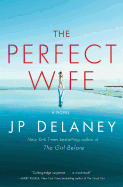
| Publisher: | Ballantine | |
| Genre: | Psychological, Genetic Engineering, Literary, Suspense, Thrillers, Fiction, Science Fiction | |
| ISBN: | 9781524796747 | |
| Pub Date: | August 2019 | |
| Price: | $27 |
| Mystery & Thriller |
by JP Delaney
At the start of JP Delaney's propulsive The Perfect Wife, Abbie wakes up in pain, hooked up to machines and with only vague memories of what transpired before. Was she in a car crash? Her tech-genius husband, Tim, is there and tells her that he and their nine-year-old son, Danny, are fine, that everything's fine. He promises to fill in the gaps in Abbie's memory after he takes her home.
She learns there was an accident five years ago, and Tim has spent all that time devoted to bringing her home. But soon Abbie starts finding hidden items around the house that indicate their relationship wasn't exactly how Tim describes it. As Abbie digs deeper into what happened before the incident, she realizes the truth could mean an end to her newfound life.
Plot points are minimal here because it's best to dive into Perfect Wife with as little information as possible. Delaney (The Girl Before) has written a swiftly paced and thought-provoking psychological thriller, touching on complex issues such as how much technology should be allowed to run our lives and what defines humanity. It asks big questions about sentience and life and death itself. Delaney is far from preachy, though; he wraps these big ideas in a spellbinding and suspenseful story that is constantly surprising and often makes the skin crawl. It's also poignant in unexpected ways (based on some of Delaney's personal experiences, according to the acknowledgments) and reminds readers that compassion is what separates humans from machines. --Elyse Dinh-McCrillis, blogger at Pop Culture Nerd

| Publisher: | Minotaur | |
| Genre: | Police Procedural, Mystery & Detective, Crime, General, Thrillers, Fiction | |
| ISBN: | 9781250293947 | |
| Pub Date: | August 2019 | |
| Price: | $26.99 |
| Mystery & Thriller |
by Robert Pobi
During a fierce snowstorm days before Christmas, a woman crosses a busy New York City street. A car stops to let her pass, but then lurches forward, killing her instantly. The driver isn't being cruel--he's been shot in the head. The bullet bursts through windshield, cranium, headrest and out the back window--a million-to-one sniper shot that leaves the FBI baffled by the who, what, where, how and why.
Special Agent Brett Kehoe seeks advice from ex-FBI agent and genius Columbia University astrophysics professor Lucas Page. Page left the FBI after an incident robbed him of his leg, arm and an eye. His reluctance to assist the Bureau vanishes when he learns the driver was his old partner. As the body count rises and the sniper's motive remains elusive, Page works with the FBI, matching wits with a brilliant killer.
In City of Windows, Robert Pobi's incredibly realistic plot transforms New York City into an otherworldly place. It's perfect for anyone who wants to melt into a crowd, even become invisible when hunched into winter gear. A lone figure in an army coat carrying a guitar case could be a musician, or his case might hold a rifle. Pobi superbly probes the depths of all his characters, but is especially masterful in his creation of the way Page can break down the logistics of any crime scene and the ESP-like abilities of Page's handler, Special Agent Whitaker. --Paul Dinh-McCrillis, freelance reviewer

| Publisher: | Dey Street | |
| Genre: | Biography & Autobiography, Women, Cooking, Culinary, Personal Memoirs, Essays & Narratives | |
| ISBN: | 9780062863928 | |
| Pub Date: | August 2019 | |
| Price: | $26.99 |
| Biography & Memoir |
by Jessica Wragg
Jessica Wragg's Girl on the Block is part memoir, part meat industry education and criticism, and part butchery how-to. Wragg shares stories of her teenage years working at a butcher shop in Derbyshire, England, where she endured sexual harassment and knowledge-hoarding, then moves on to her years balancing university with weekends at the Ginger Pig, one of London's most famous butcher shops. With humor and unflinching self-awareness, Wragg details both her poor choices and her successes, including the time she lived in a bedbug-infested apartment and when she sold her first major piece of writing.
Wragg breaks up the personal narrative with passages detailing the state of the meat industry in the U.K. and worldwide. She discusses factory farms and commercial slaughterhouses, the differences between breeds of cattle and how we began to incorporate so much meat into our diets. The book doesn't shy away from the less savory aspects of meat production and consumption, nor does Wragg ignore the environmental and emotional ramifications of the process: "I have decided that as I continue to eat meat and to work in the industry, it's much better to educate myself and others, to refuse to turn a blind eye to the origin of the meat on my plate."
Girl on the Block is an accessible look into the complicated world of meat, and readers will keep it on the shelf for the lessons on butchering, meat selection and how to prepare the best steak of their lives. --Suzanne Krohn, editor, Love in Panels

| Publisher: | The New Press | |
| Genre: | Law, Constitutional, American Government, Judicial Power, Political Science, Judicial Branch | |
| ISBN: | 9781620973585 | |
| Pub Date: | August 2019 | |
| Price: | $25.99 |
| Starred | Political Science |
by Burt Neuborne
In When at Times the Mob Is Swayed, Burt Neuborne draws on his extensive experience as a civil liberties lawyer to consider threats to American democracy and the Constitution. Neuborne was the national legal director of the American Civil Liberties Union and is now the founding legal director of the Brennan Center for Justice. He uses his knowledge of the Constitution, the electoral system and the judicial system to probe not only the state of the union under the 45th president of the United States, but how the structure of the country's founding documents, the Supreme Court and people's civil involvement may have ushered in this time.
"A well-functioning democracy mirrors a society. It does not cure it. That we must do ourselves," Neuborne writes, describing not only major corrections that need to happen on the Constitutional level via the Supreme Court, but also actions that citizens can take, such as prioritizing voting, judicial reform and advocating against runaway campaign finance spending and gerrymandering. He is neither hopeful nor hopeless; rather, his pragmatic tone and realistic approach to what needs to change, and why, makes for a nuanced discussion of civic minutiae, current affairs and historical context that is approachable. While some of the details he mentions have already come to the public forefront (e.g., the Mueller Report and a gerrymandering suit taken before the Supreme Court), this book nevertheless proves itself a prescient how-to for those who, looking at current affairs, feel helpless to effect change. --Michelle Anya Anjirbag, freelance reviewer
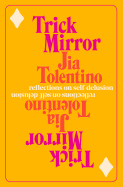
| Publisher: | Random House | |
| Genre: | Feminist, Literary Criticism, Literary Collections, Social Science, Essays | |
| ISBN: | 9780525510543 | |
| Pub Date: | August 2019 | |
| Price: | $27 |
| Starred | Essays & Criticism |
by Jia Tolentino
In her highly anticipated debut, Trick Mirror, columnist for the New Yorker Jia Tolentino thoughtfully deconstructs the ethos and mythos of millennial culture, locating within it several key defining themes: infinite scams (Fyre Festival, Theranos), paralyzing economic insecurity (the student debt crisis, the Great Recession) and the unabashed monetization of the personal profile (influencer culture). In nine essays, Tolentino taxonomizes contemporary culture, identifying how the principal forces of reality television, social media and growing political extremism have carved out a particular way of engaging with the world that, for an entire generation, renders selfhood inextricable from capital.
Trick Mirror's first essay, "The I in Internet," grounds the scope of Tolentino's exploration in incredibly stark terms. She argues that the Internet, the key force in millennial identity creation, is entirely oriented toward performance, decontextualization and opposition. Tolentino leaves it to readers to decide what the long-term social consequences of that are, but she does posit the notion that somewhere in the last decade, online presence has become less of a hobby and more of an existential necessity.
A millennial Sontag, Jia Tolentino exhibits profound cultural fluency on a wide range of topics: her essays move seamlessly and cannily between Barre class, Harriet the Spy, mega-churches and drug use--topics otherwise disparate, but cleverly bridged through her analysis. Tolentino documents the extreme precariousness of the advanced capitalist landscape with wry humor and candid self-reflection about her participation in the systems she critiques. A brilliant and hilarious book, Trick Mirror brings some much-needed nuance to contemporary cultural discourse. --Emma Levy, publishing assistant, Shelf Awareness
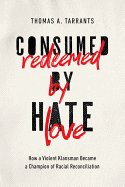
| Publisher: | Thomas Nelson | |
| Genre: | Biography & Autobiography, Discrimination & Racism, Inspirational, Christian Living, Personal Memoirs, Religion, Violence in Society, Social Science | |
| ISBN: | 9781400215324 | |
| Pub Date: | August 2019 | |
| Price: | $24.99 |
| Religion |
by Thomas A. Tarrants
In the 1960s, Tom Tarrants, a product of the segregated South, began reading virulently racist and anti-Semitic literature, started associating with the Klan and ultimately attempted to bomb the home of a prominent Jewish leader in Meridian, Miss. Tarrants was shot four times by law enforcement but survived, and after several surgeries was tried and sentenced to 30 years at Parchman, the most notorious prison in Mississippi. Through Klan contacts, Tarrants orchestrated an escape, but was recaptured and put in solitary confinement for the next three years.
During those three years, he had nothing to do but read. At first, he continued with hateful literature, but slowly he broadened his horizons, and read everything from Plato to the Bible. This led him to convert to Christianity, and caused a drastic change in his personal life. His behavior altered so abruptly that prison guards and FBI agents alike spoke out on his behalf, eventually leading to his release after eight years in Parchman.
Tarrants went to college and seminary, became a pastor and then took a position at the C.S. Lewis Institute, training and teaching other pastors. For many years he has spoken out against racism within the church, promoting racial reconciliation and "seeking the common good and loving people across political divides." His life is an astonishing one, and Consumed by Hate, Redeemed by Love creates hope in this troubled era that other lives can be equally changed. Poignant yet to the point, Tarrants's story of redemption will appeal to both Christian and non-Christian readers. --Jessica Howard, bookseller at Bookmans, Tucson, Ariz.
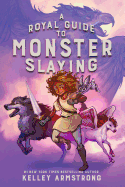
| Publisher: | Puffin Books | |
| Genre: | Fantasy & Magic, Monsters, Social Themes, Self-Esteem & Self-Reliance, Juvenile Fiction | |
| ISBN: | 9780735265356 | |
| Pub Date: | August 2019 | |
| Price: | $16.99 |
| Starred | Children's & Young Adult |
by Kelley Armstrong, illust. by Xavière Daumarie
Clan Dacre has ruled over the clans of Tamarel for generations, their authority based on a simple promise: "We will keep the monsters away." In every new generation, the eldest child in Clan Dacre takes the ivory throne, and the second-born takes the "gleaming ebony-wood" sword of the royal monster hunter. Twelve-year-old Princess Rowan wants nothing more than someday to take over her aunt's role as royal monster hunter. Unfortunately, she's two minutes older than her twin brother, Rhydd, placing her in line for the throne instead. When disaster strikes, Rowan has the chance to prove herself and take her aunt's position. All too aware of the dangers of monsters, she sets off on her first quest accompanied only by a feisty baby jackalope and her aunt's fearsome warg, a giant wolf who watches her "like a nursemaid who hates children." Hunting is what Rowan knows best, but can she prove she is best suited for the sword?
A Royal Guide to Monster Slaying by Kelley Armstrong (author of the adult thriller Wherever She Goes; the Age of Legends series) is an intrepid adventure filled with cunning pegasi, unicorns ("Jerks. All of them.") and a deadly gryphon. Rowan's scientific curiosity about the monsters is a wonderful counterbalance to her own impulsive nature, and the monsters themselves are enchanting and terrifying forces of nature. Complemented by Xavière Daumarie's illustrated field guide to monsters at the back of the book, A Royal Guide to Monster Slaying is a fresh take on familiar fantasy creatures and situations. --Kyla Paterno, freelance reviewer
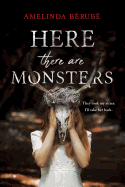
| Publisher: | Sourcebooks Fire | |
| Genre: | Paranormal, Occult & Supernatural, Horror, General, Family, Young Adult Fiction, Fairy Tales & Folklore, Siblings | |
| ISBN: | 9781492671015 | |
| Pub Date: | August 2019 | |
| Price: | $10.99 |
| Children's & Young Adult |
by Amelinda Bérubé
Deirdre, at 13, "refuses to wear anything but dresses, and... leaves her hair unwashed until it's hanging in lank strings." She's imaginative to the point of seclusion, living in made-up worlds of tarot card queens, "stick monsters and animal bones." Her parents think she's having "trouble adjusting," but older sister Skye knows better--Deirdre doesn't want to adjust, she wants only to live in her fantasies, where Skye is her knight. Now 16, Skye refuses to be Deirdre's champion any longer. She's spent years coming to her little sister's rescue because kids are mean and because Deirdre--often purposefully creepy--makes herself a target. The family has moved, and Skye is determined to start over, make friends, remove herself from Deirdre's games of queens and knights and stick golems. Then, Deirdre goes missing, and Skye becomes "that girl with the missing sister"; "Count on Deidre to ruin everything," Skye thinks, "spreading awkward silence like a plague."
Deirdre's disappearance is weird, though. Her bed was filled with leaves, pinecones and sticks and, though the police found her boots in the spread of forest and swamp behind the house, she is nowhere within a range that makes sense for barefoot travel. Skye begins noticing scrabbling noises around the house, sees visions of things moving along the edges of the woods, hears a tinkling bell that begs to be followed into the forest.... Is it possible that Deirdre's fantasies aren't made-up? That they're real and malevolent?
Amelinda Bérubé's novel is tight with tension and full of disquieting suspense as she builds a world in which the reader cannot find footing. Everything and everyone reeks of malice while nothing and no one can be trusted--perfect conditions for a compelling YA horror. --Siân Gaetano, children's and YA editor, Shelf Awareness
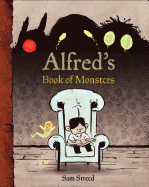
| Publisher: | Charlesbridge Publishing | |
| Genre: | Alternative Family, Monsters, Family, Imagination & Play, Juvenile Fiction | |
| ISBN: | 9781580898331 | |
| Pub Date: | August 2019 | |
| Price: | $15.99 |
| Children's & Young Adult |
by Sam Streed, illust. by Sam Streed
Alfred's favorite book, about the "monsters that lurk... in the shadows of his little town," begins "the Nixie soaks at the bottom of the stream, beneath ancient slime and pitch-black mud." Holed up in his study, Victorian-era Alfred reads about creatures like the Black Shuck (whose "one blood-red eye burns with an undying rage") until his incorrigible aunty makes him join her for tea. After learning about the Lantern Man, who carries the "light of one thousand souls," Alfred decides to invite the monsters to tea time, hoping to turn something charming into something terrible.
With nods to Tim Burton and Edward Gorey, Sam Streed cheekily juxtaposes the "delightful" with the "dreadful" in Alfred's Book of Monsters. A simple color palette of black and brown punctuated with pops of near-neon colors helps contrast the mundane scenes with the supernatural ones. In scenes with Aunty, cold blues predominate, while warmer oranges, reds and yellows take over scenes of the monsters and Alfred in his study.
The very best part of Alfred's Book of Monsters is the Book of Monsters itself. A bird's-eye view of the pages, with Alfred's hands peeking out from the bottom margin, lets readers experience Alfred's wonderment. Each spread is made to look as though the book is ancient and handcrafted--with tears in the pages and thick, inky black drawings and text. The highly detailed artwork features renderings of the creatures' anatomies (such as their skeletal systems), ratcheting up the gothic tone. This delectably macabre picture book debut is creepy and atmospheric but not so scary that little ones won't enjoy it, too. --Lana Barnes, freelance reviewer and proofreader